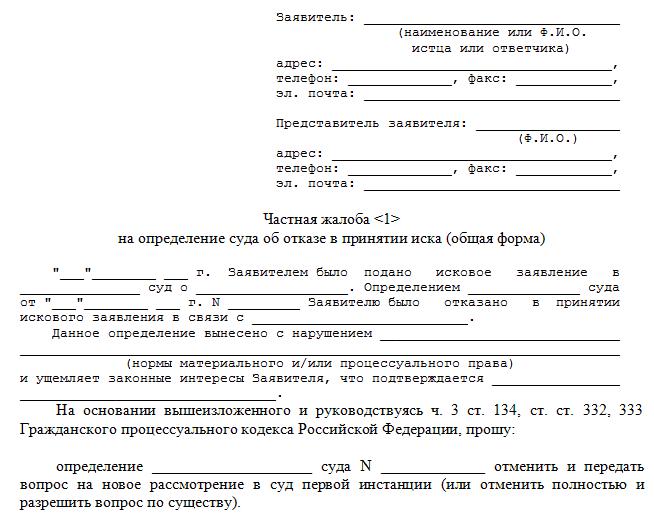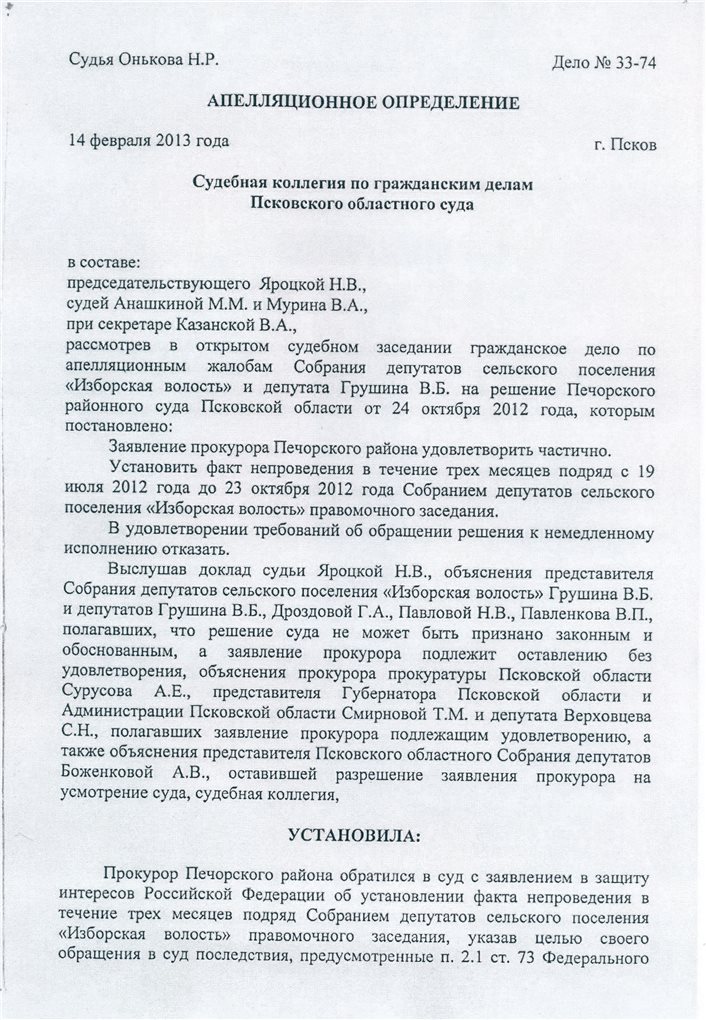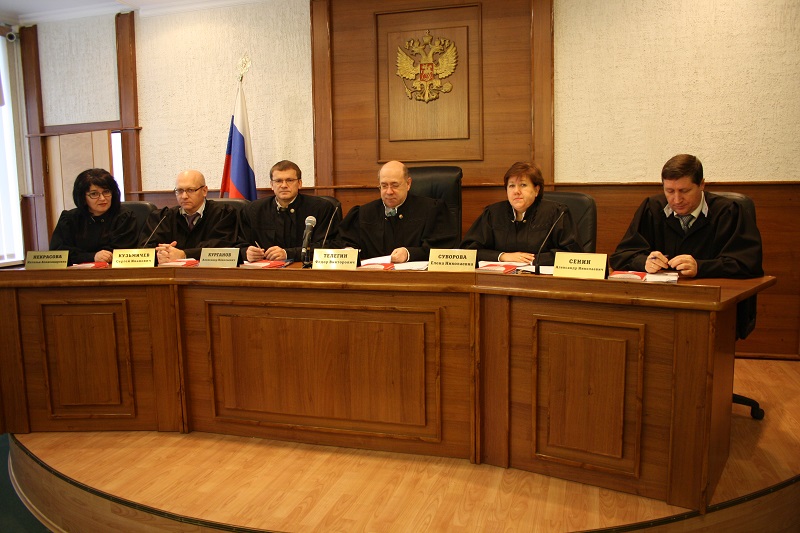Appeal ruling - an act of the court of second instance, which allows the fate of a previously taken decision in a case. The law imposes a number of requirements, they affect both the design of the text and its semantic content, we will touch on a number of the most significant issues.
Which courts rule him
The second instance, which has the right to make appeal rulings, is represented by a number of institutions. This includes district courts reviewing judges of the peace. Most of the cases are heard by the courts of the subjects (regions, republics, territories). They mainly deal with the appeal review.

The Supreme Court performs this function in rare cases. A special board has been created, which is called that.
What acts are complained of
The court makes acts in the course of the trial - definitions, they are intermediate. Decisions are taken on the merits: it reflects agreement or disagreement with the claim.
The participant in the process has the right to complain about the court decision and his actions taken during the process. For example, to stop production. An appeal against a court ruling is called a private complaint.
Complaint Structure
They are written according to uniform rules:
- name of court;
- an indication of the appealed acts, the date of their adoption;
- listing of process participants;
- a listing of the circumstances of the case, the reasons for considering the decision unreasonable (the facts were not revealed and not evaluated or everything was done incorrectly, violations of substantive and procedural rules of law);
- request to the court (to cancel the decision and take a new one or change it in part, etc.).
What decision to make on the complaint, the panel decides at its discretion, the law limits it to the extent of the review. In an exceptional situation, judges have the right to go beyond the arguments of the complaint and refer to violations that the applicant did not indicate or did not notice.

An application for review is always paid a fee of 50% of the amount paid when filing a claim.
The number of copies of the complaint is filed by the number of participants in the case.
Features of the application to the third instance
Where to complain next? The following is a cassation appeal of the appeal determination.
An important difference between complaints of this order: it is forbidden to discuss factual issues in it. The statement should write about significant violations of the rule of law. Otherwise, the papers will be returned with reference to the revaluation by the applicant of the facts, which is unacceptable.

Significant violations include two groups:
- specified in the law (for example, violation of the secrets of the deliberation room);
- which the court considers material, based on the specifics of the case, which affected its legality and the validity of the decision.
As a rule, the task of the cassation appeal against the appellate ruling is to achieve its cancellation and transfer the case back to the second or even the first instance. A complete review with a new decision is a rarity.
Today there are two cassation instances - in the courts of the subjects and in the Supreme Court. Complaints requirements and filing rules are uniform. Documents are submitted directly to the court, which will make the decision.
The appeal period is 6 months; he is assigned to both attempts. The review process in the first appeal does not suspend its course. Therefore, it is undesirable to defer a complaint. Deciding on a complaint takes a considerable amount of time.
Judicial Requirements
They are tough enough, but it cannot be said that the judges fully comply with them.The fact that the arguments are fully reflected and the conclusions of the court are accurately stated shows the judges' confidence in their position. Sometimes one minute is enough to understand that the decision was clearly not made on the basis of the law.

Art. 329 Code of Civil Procedure gives the following list of requirements for appeal definitions:
- date and place (city, town where the court is located);
- name of the court (indicated in full);
- transfer of surnames and initials of judges;
- mention of the person who filed the complaint, his procedural status (plaintiff, defendant, third party);
- a brief description of the subject of the decision of the court of first instance, complaints;
- the arguments of the complaint or complaints are stated, if there are several of them, evidence, explanations of the participants in the case;
- circumstances that the court found out;
- assessment of the parties ’arguments, evidence, actions of the trial court, if necessary;
- court findings on the validity of the complaint;
- motives why the court considers the arguments of the complaint unfounded or insignificant;
- distribution of expenses between the parties if a new decision is made in this regard;
- signatures of judges considering the case;
- court seal.
Note that the appeal rulings most often do not comply with the law regarding the presentation of the arguments of the parties and the reasons for the decision. This is associated with a clear desire to get away from the absurdity of their actions, and reduce the chances of canceling decisions in the cassation instance. At the same time, there is a desire to comply with procedural standards. Their violation is considered more significant than the adoption of an incorrect decision in essence.

If there is a clear violation of the norms of the process, the third instance will certainly respond. The essence of the decision worries her much less.
Design Definition
The definition is printed on paper, the sheets are stapled with a tag. A seal is put with the obligatory mark that this is a copy. The original judicial act always remains in the case. As a rule, an appeal ruling is issued by the regional court or by the body that adopted it (respectively, the district or Supreme court).
The definition takes effect immediately after the announcement. The appeal period starts on the next day.
